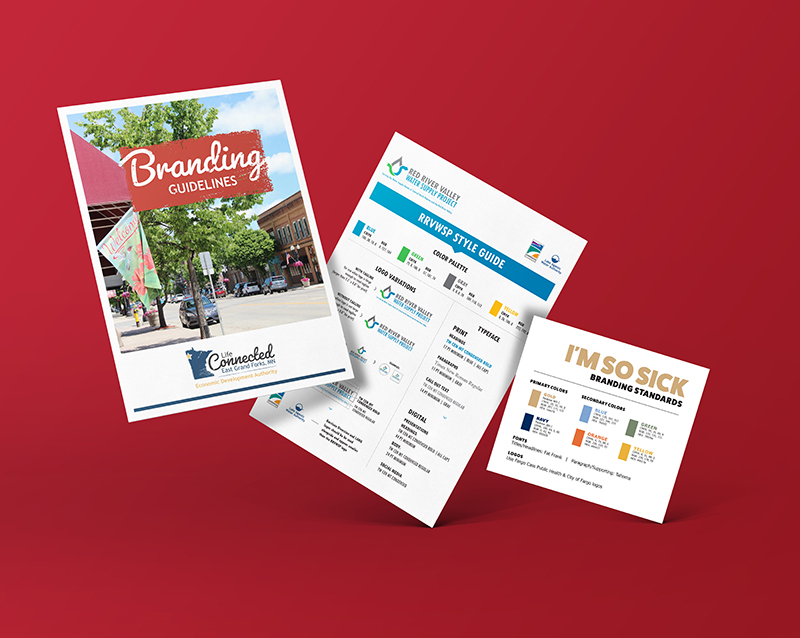A lot of time and effort goes into crafting your brand, and the strategy behind choosing the perfect typeface, colors, and other design elements that communicate your brand’s identity is no small part. Stopping just short of forming a full-on Brand Police, how can you maintain control over your organization’s visual identity? One beneficial tool is a manual of your brand standards. Or is it a brand guide? Or is it a style guide? Brand bible? Whatever you decide to call it*, it’s an essential part of enforcing what you’ve worked hard to develop.
*We prefer brand standards. Guideline implies loose suggestions, whereas standard implies strict regulation.
WHAT ARE BRAND STANDARDS?
Brand standards are instructions on how to implement your brand while maintaining consistency across all the formats your branding appears, from your website and email signatures to advertisements, stationery, and business cards. Brand standards can be as simple or complex as you deem necessary — from a postcard of reminders hanging on your wall to a multi-page document.
WHY ARE BRAND STANDARDS IMPORTANT?
- Consistency — Following brand standards ensures your messaging is consistent across multiple platforms and between those providing content.
- Accessibility — Whether most of your content is created in house or through an external agency, what could be easier than sending a document with your brand standards clearly outlined?
- Preservation — The average length of time at a job is about four and a half years. Having brand standards in place is a great asset for new employees to pick up right where someone left off.
- Efficiency — Save time and effort by providing established standards rather than recreating the wheel every time.
- Recognition — Consistency helps increase brand recognition and brand identity.
WHAT DO BRAND STANDARDS TYPICALLY INCLUDE?
- Colors — Provide primary and secondary color palettes with color values for print, screen, and web.
- Typefaces — Provide specific font names for print and screen use, and specific examples for headlines, paragraphs, and call outs.
- Logos — Provide each version of your logo and when to use them. Also, provide a few “do not” situations such as scaling the logo disproportionately.
- Imagery — Provide examples of acceptable graphic and photographic styles.
- Brand Elements — Provide examples of commonly used design elements such as patterns, shapes, icons, etc.
WHAT CAN YOU INCLUDE TO TAKE YOUR BRAND STANDARDS UP A NOTCH?
- Mission, Vision, and Values — It’s always helpful to remind others of your brand’s foundation.
- Tone of Voice — Your brand isn’t just about visuals, but also how your businesses’ character is shown through words.
WHO ARE YOUR BRAND STANDARDS FOR?
Everyone. Yes really, everyone. Brand standards aren’t meant to hold trade secrets or other sensitive information, which is why companies like Uber, Toyota, and even the US Army Corps of Engineers have them readily available. At the very least they should be easily accessible by your entire organization.
HOW CAN YOU ESTABLISH YOUR OWN BRAND STANDARDS?
The first step is to go through an initial branding or rebranding process. (P.S. we love taking on challenging branding projects, check out our portfolio here. P.P.S. if you’re unsure if your organization is ready for a rebranding, check out this blog post here.)
If you already have an established brand and can provide information on most of the items above, you’re ready to go!

